- Home
- Technical Products
Enterprise Cloud IT Solutions
Test Measurement
Industrial Measurement
- Solutions
Enterprise Cloud IT Solutions
Test Measurement
- Resource Center
- About Us
 EN
EN
Multi-functional Miniature Shock Vibration Recorder
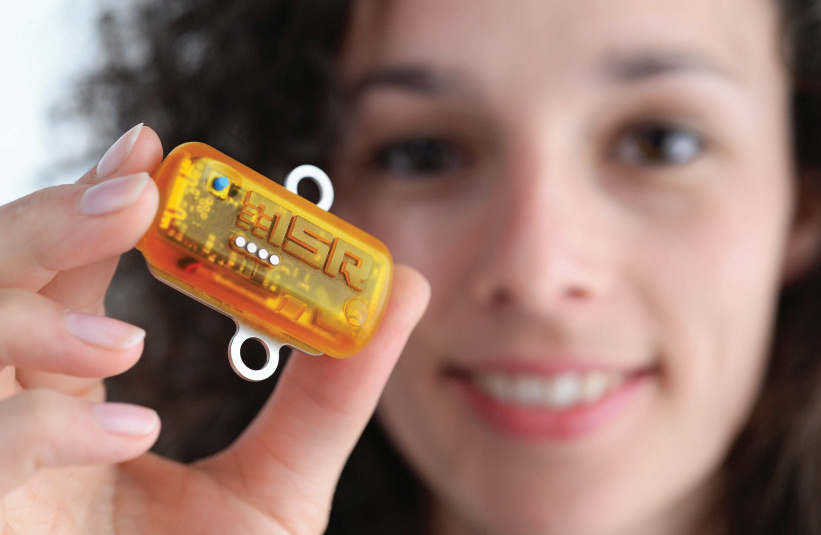
Are you looking for a compact data logger with large memory to handle various measurement tasks such as measuring and recording shocks, vibrations, temperature, humidity, pressure or light? Contact us to find the right data logger!

Related Products

HK-MSR165
1 built-in 3-axis accelerometer ±15 g or ±200 g
- 1600Hz
- Stores 2 million or 1 billion (SD card) measurements
- Optional built-in or external temperature, humidity, pressure and light sensors
- Analog Input
- Battery life 5 years
- MSR ShockViewer Impact Analysis Software
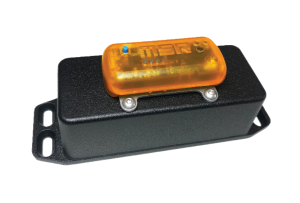
HK-MSR175
Two built-in 3-axis accelerometers ±15 g and ±200 g
- 6400Hz
- Stores 2 million measurements
- 1 built-in temperature sensor
- Built-in humidity, air pressure and light sensors
- Li-Po battery 230 mAh or Li-SOCI 2 battery
- MSR ShockViewer Impact Analysis Software
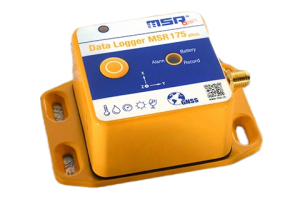
HK-MSR175 Plus
Two built-in 3-axis accelerometers ±15 g and ±200 g
- 6400Hz
- Stores 2 million measurements
- Built-in temperature, humidity, air pressure and light sensors
- GPS/GNSS receivers
- Li-Po battery 2400 mAh or Li-SOCI 2 battery
- MSR ShockViewer Impact Analysis Software
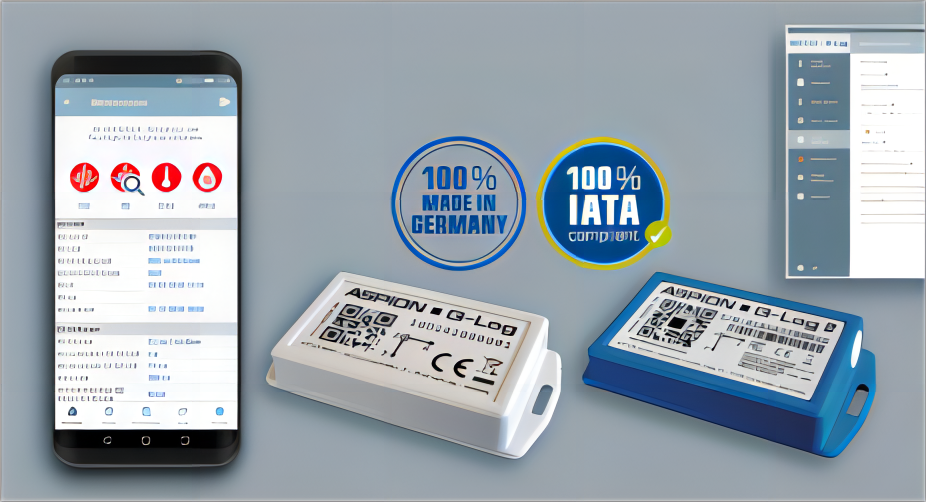
Economy
Economic Shock Recorder
ASPION Data Logger is your reliable partner for monitoring and securing valuable commodities in the global supply chain.
Multiple award-winning data loggers for transportation monitoring of shock and weather ensure transparency and security in your supply chain. Intelligent algorithms visualize shocks and impacts in meaningful detail and show the associated changes in temperature and humidity - easy to understand and flexible. Our "Made in Germany" energy-optimized sensor solutions enable the simple, safe and intelligent networking of processes and processes for the efficient organization of the entire logistics chain. Companies thus save valuable time and reduce costs. With other individually adapted electronic developments, we can create lasting benefits for your industrial applications and your customers.
Model Comparison
ASPION G-LOG
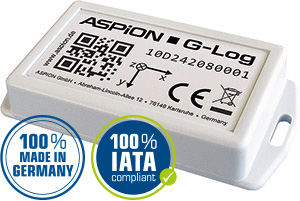

- Acceleration sensor for impact on 3 axes, max +24g per axis
- Temperature Sensor
- Humidity Sensor
- Ring memory holds 286 events.
- 9 Shocking Events, Progress of Details
- Wireless data transmission using NFC
- Wireless data transmission with BLE (Bluetooth Low Energy)
- ABS housing with IP 50 protection rating
- Battery CR2032, up to 1.5 years life, replaceable by the manufacturer
ASPION G-LOG 2
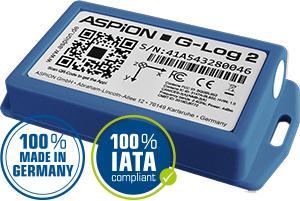
.webp)
- Acceleration sensor for impact on 3 axes, max +24g per axis
- Temperature Sensor
- Humidity Sensor
- Circular memory of 950 events
- 9 Shocking Events, Progress of Details
- Wireless data transmission using NFC
- Wireless data transmission with BLE (Bluetooth Low Energy)
- ABS housing with IP 50 protection rating
- Battery CR2032, life time up to 1.5 years, user replaceable
The data logger is intuitive to use and requires no training to operate. Ergonomic PC software and smartphone apps enable convenient wireless operation and comprehensive evaluation. Export function clearly prepares the data to be transferred. Extensive controls such as start and end dates, PIN assignment and time zone evaluation give you flexibility.
By the way: there are no follow-up costs after the purchase of the sensors, the PC software and applications are always free of charge for the user!
Everything is "Made in Germany".
The sensor's ABS plastic housing is compact, sturdy and discreet. Optimally matched components and intelligent power management allow for a battery life of up to 1.5 years, a long shelf life and resource-saving multiple use. But the sensors are also suitable for single use - especially because of their low price.
Shock sensors are suitable for sea and air transportation and can be used globally in intermodal transportation. They are easy to configure and install, so even untrained personnel can easily put them into operation. Data transfer is equally simple: all sensors communicate wirelessly via NFC, G-Log 2 and BLE.
By recording shock and vibration or harmful temperature and humidity values as well as date and time, the cause of damage can be specifically determined. The data logger records up to 950 events. As shown in the example, a detailed shock process of milliseconds per shaft is particularly important. This can be used to identify any damaging transportation events. Packaging optimization can also be understood in this way.


Intelligent transportation monitoring in 2 minutes


